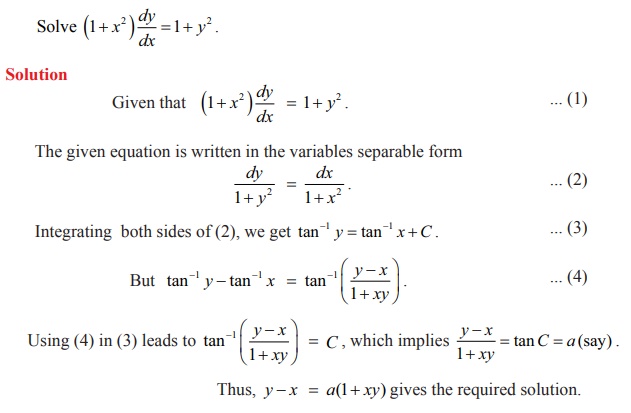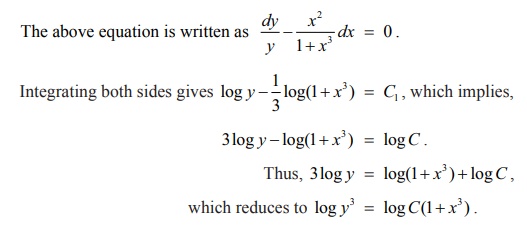Solution of First Order and First Degree Differential Equations | Mathematics - Variables Separable Method | 12th Maths : UNIT 10 : Ordinary Differential Equations
Chapter: 12th Maths : UNIT 10 : Ordinary Differential Equations
Variables Separable Method
Solution of First
Order and First Degree Differential Equations
Variables
Separable Method
In
solving differential equations, separation of variables was introduced
initially by Leibniz and later it was formulated by John Bernoulli in the year
1694.
A first
order differential equation is separable if it can be written as h ( y)
y ′ = g(
x) where the left side is a product
of y′ and a function of y and the right side is a function of x . Rewriting a separable differential
equation in this form is called the method of separation of variables.
Finding
a solution to a first order differential equation will be simple if the
variables in the equation can be separated. An equation of the form f1 (x)g1 ( y)dx
+
f 2 (x)g 2 ( y)dy
=
0 is called an equation with variable separable or simply a separable
equation.
Rewrite
the given differential equation as

Integration
of both sides of (1) yields the general solution of the given differential
equation as  , where C is an arbitrary constant.
, where C is an arbitrary constant.
Remarks
1. No
need to add arbitrary constants on both sides as the two arbitrary constants
are combined together as a single arbitrary constant.
2. A
solution with this arbitrary constant is the general solution of the
differential equation.
“Solving a differential equation” is also referred to as
“integrating a differential equation”, since the process of finding the
solution to a differential equation involves integration.
Example 10.11

Example 10.12
Find the
particular solution of (1+ x3
)dy − x2
ydx = 0 satisfying the condition y(1) = 2
Solution
Given
that (1+
x3 )dy − x2ydx = 0 .
The above equation is written as

Hence, y 3 = C(1+ x3 ) gives the general solution of the given differential
equation. It is given that when x = 1, y = 2. Then 23 = C(1+1)
⇒ C = 4 and hence the
particular solution is y3 = 4(1+ x3)
.
Related Topics